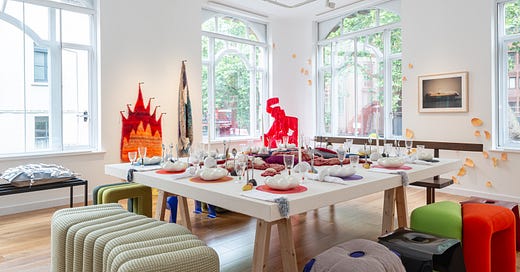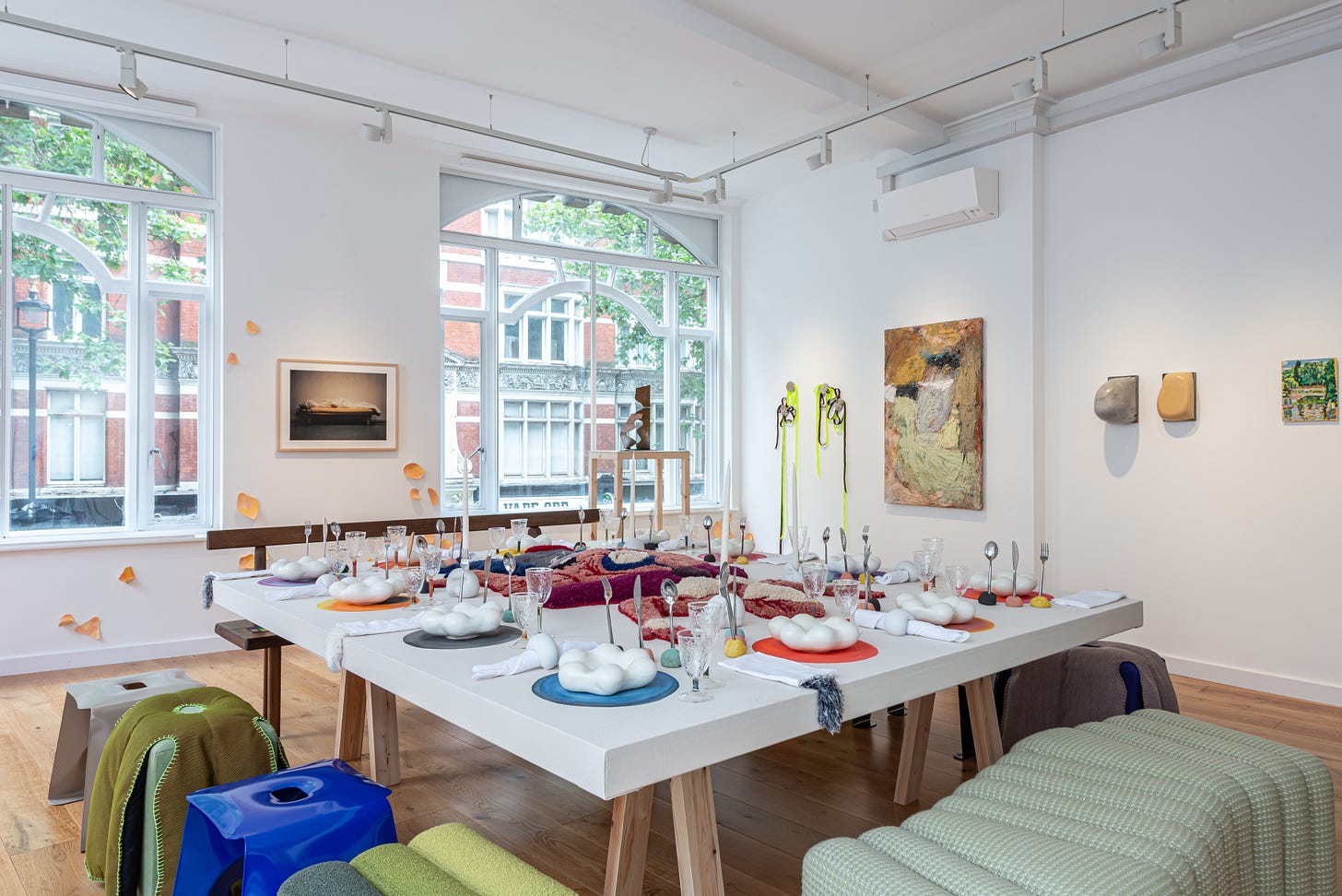A conversation with Rosie Reed of The Amber Room
The latest "Sticking up for Soft" can be seen until 10th of August at Cedric Bardawil!
After seeing Anna Perach’s Instagram post on her meticulously tufted canvas on table, I was intrigued to visit the Amber Room’s latest exhibition Sticking up for Soft curated and organised by Rosie Reed. The playful and thought-provoking exhibition hosted by Cedric Bardawil includes 18 artists who explore the notion of softness in various ways: materially, conceptually, and formally. Transforming the gallery into an experiential exhibition in the form of a dinner party really resonated with my curatorial interests and research and obviously is the perfect content for this Substack page! For this occasion, to learn more about the concept behind the Amber Room, Rosie’s practice and everyone else involved, I conducted a small in-conversation with her.
I really hope you enjoy the Q&A and manage to see the exhibition before it closes on the 10th of August!
The artists featured are: Nancy Allen, Leo Costelloe, Emma Mackintosh, Anna Perach, Freddie Robins, Alexandra Searle, Sam Bakewell, Lucy Ellerton, Richard Malone, Stephen Polatch, Ro Robertson, Christopher Taylor, Rob Branigan, Lydia Gifford, Jaclyn Pappalardo, Sue Ray, Rosie Reed, Isabelle Young.
HK: You have a sculpture background from your MA at the Royal College of Art and previously studied for your BA at the Ruskin School of Art. How does your sculpture practice interweave with your curatorial interests working collaboratively with other artists?
RR: In my own practice I am interested in thinking about the space that a sculpture will occupy, and the ways it will take up, carve into, highlight or interrupt its surroundings. The impulse to curate came out of this urge to fill an empty room and to create opportunities to collaborate with artists I admire. Much of The Amber Room has been about forging relationships - between works, between artists, between the viewer and artwork and between the people that come for dinner and to see the show. The Amber Room is always a maximalist collection of works and this enthusiasm for the sensual and tactile possibilities of surfaces, material and colour extends into my own practice.
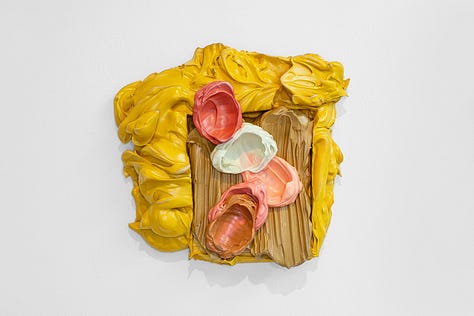

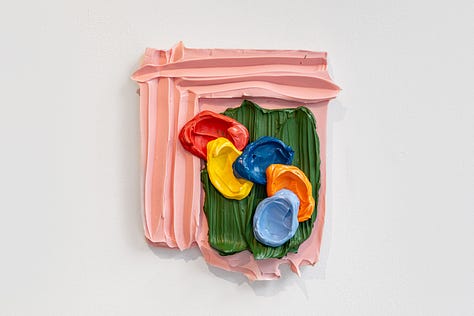
Which key women artists have influenced your practice and research?
I have aways been very influenced and motivated by the late, great Phyllida Barlow, I am so excited to see her current show at Hauser & Wirth, Somerset. Lynda Benglis has long been a huge source of inspiration for me, I am in awe of her material driven feminist force of a practice. I love Karla Black, Nairy Baghramian, Annette Messager, Nicole Eisenmann, Tai Shani, Judy Chicago- the list goes on! There are many trailblazing, iconic women sculptors that inform my practice.
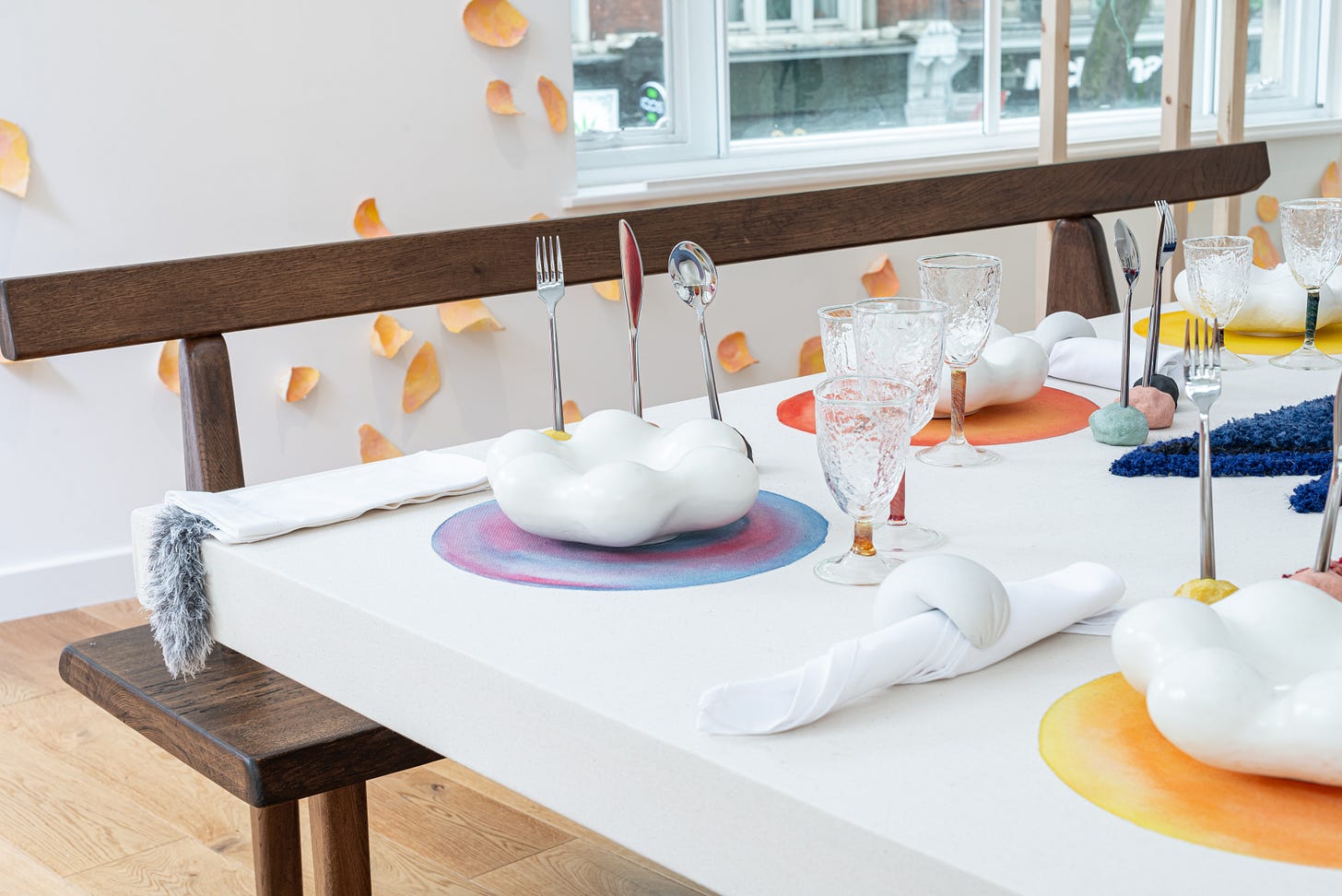
How did you initiate The Amber Room? How did the name come about? Is there a reference to Catherine Palace?
I started The Amber Room after graduating from the RCA because I wanted to create a model for bringing together an array of vibrant, UK based, emerging practices, that was immersive and experience driven. I borrowed the title from The Amber Room, which is the largest missing treasure throughout history, it was a chamber panelled with Amber and Gold, in Catherine Palace near St Petersburg and it went missing after WW2. I loved the idea of creating my own Amber Room, a treasure trove of work by brilliant artists that appeared in different formats and locations. I wanted people to spend more time with the work and to discuss it with one another, I thought a good way to make that happen was to invite them to dinner - so the aim then became for everything on the table, used throughout dinner to be made by the exhibiting artists.
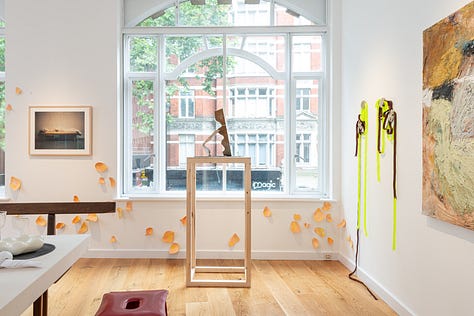
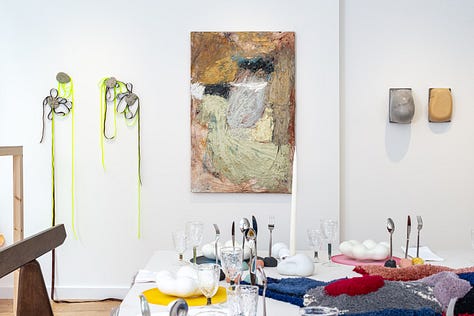
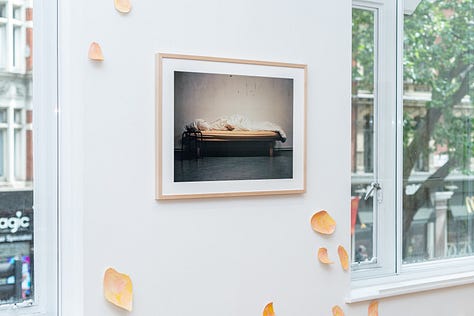
With the Amber Room, how do you organise the exhibitions and events around a dinner? Do you think of an exhibition theme or about the dinner and artists first, or is the process more organic?
The process definitely feels organic. I work to a theme or respond to a space and I love the different ways that The Amber Room can take shape. At Reference Point Library, all of the artists responded to a book in their collection, at Matt’s Gallery the artists exhibiting had sculptural or materially concerned practices that I felt worked with the scale of the building and the history of the gallery. For Cedric Bardawil, I thought it felt like a good time to think about softness. When studying at the RCA, my dissertation was titled Sticking up for Soft and I have continued to be interested in softness in all its varied forms- as a physical and aesthetic property, a characteristic, insult, approach and response. I was really excited by the prospect of extending my thesis into an exhibition and dinner.
Do galleries and spaces find you now, or do you actively look for different, itinerant spaces?
I am always looking for new spaces. The opportunities we have had so far have come out of conversations and a mutual interest - Cedric came to an Amber Room a few years ago and is now kindly hosting us, this is our first time at a commercial gallery and last year was at Matt’s Gallery, which was our first time working with a public institution.

How did the group exhibition Sticking up for Soft come to fruition? Have you worked with most of the artists before?
I am working with most of the artists in Sticking up for Soft for the first time, but there are a few I have worked with before. The Amber Room is a great way to meet new artists and discover their practices but it is also lovely to develop longer standing relationships with artists and to work together again. The conversations had in the lead up to the exhibitions are always such a pleasure, it is inspiring and energising to have an insight into different artist’s processes, ideas and studios. In 2022, The Amber Room hosted an office Christmas party for the artists we have worked with so far, it was in a disused office space in Vauxhall and I made employee award certificates that were plastered over the walls, we had a water cooler, lots of tinsel and thirty five artists made a unique work on a napkin that was for sale. It was a great evening for getting everyone together and creating a sense of a work community because being an artist can be lonely!

How many dinner events did you host in this last exhibition? Does the number of events depend on the exhibition, space, duration and budget (or all listed)?
We had three dinners as part of Sticking up for Soft, hosting 36 people across three evenings, each evening twelve guests came for four courses and drinks, eating off of and within the exhibition and it was a lovely intimate atmosphere, this is the first time that both the table and chairs are made by artists. I always enjoy meeting and chatting with new Amber Room guests and I hope that they enjoy meeting each other around the table as well. It does depend on all of the above, the dinner tickets help pay for the running of the event but I also consider how many people the space can cater for, I have two babies and The Amber Room is always an intense time away from them so I have to keep the dinners to a manageable amount. I host a private view and have the installation open as an exhibition following on from the dinners so that it can be seen by as many people as possible!
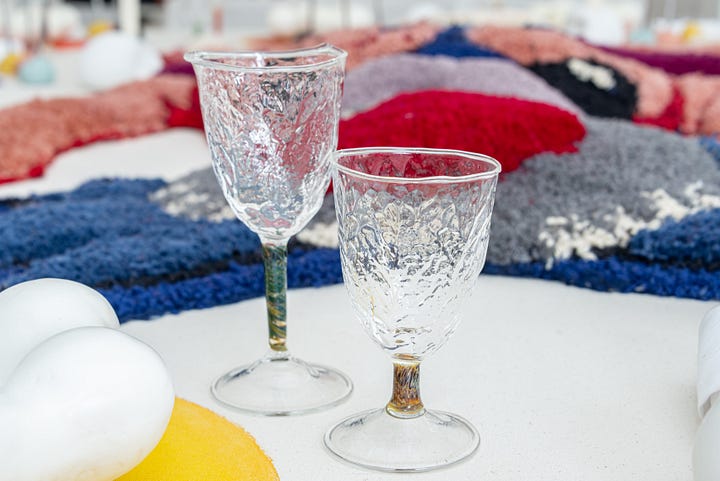
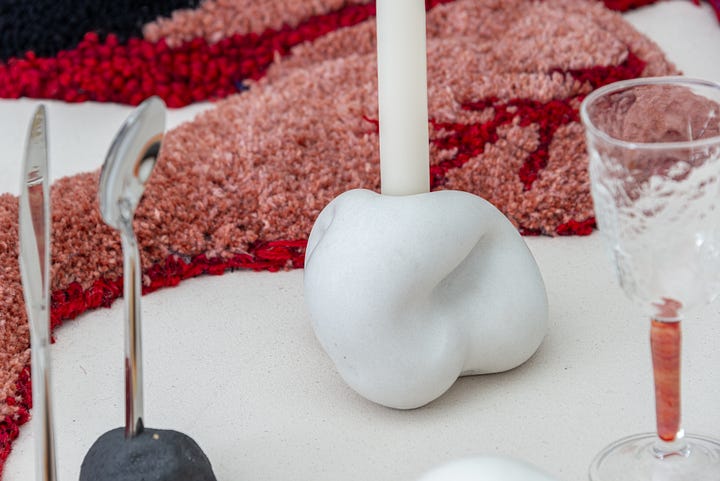
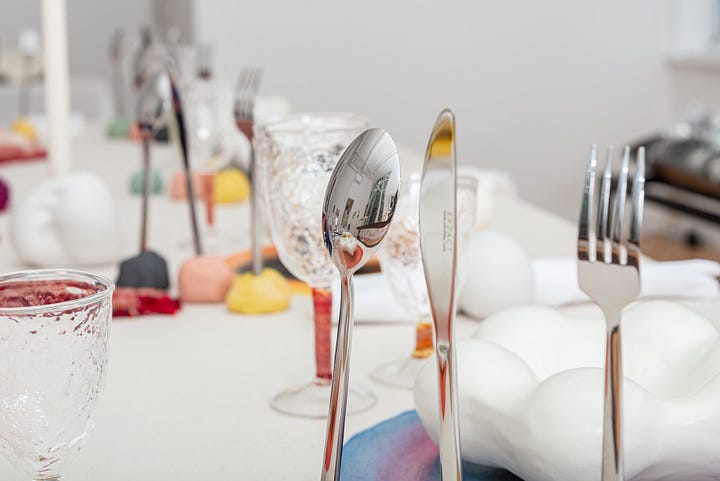
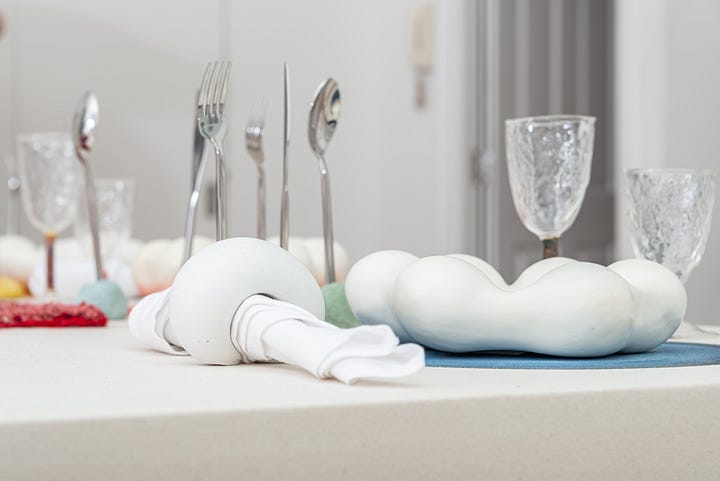
How does exploration of food, conviviality, art and design come into play in your practice and interest?
My practice outside of The Amber Room isn’t directly engaged in the culture of food and dining but the emphasis on tactile, visceral, seductive/repulsive, gorging materiality is a key formal, as well as conceptual property which hopes to entice. I aim to create considered surfaces that disclose narrative, revealing tiers of time and movement in the build up of layers and I try to slow down the way the work will be received, asking the viewer to zoom in and notice the details. This ambition was a big reason for starting The Amber Room, in inviting people for dinner I aimed to increase their time spent in the work’s company so that they can notice and enjoy every aspect of it throughout the evening.
In relation to design, The Amber Room has provided an interesting challenge for many artists to make a work that plays with the notion of functionality or that is of a smaller, more domesticated scale. We have had performance and video artists making napkins, sculptors making candle holders, napkin rings and plates… I think that these pieces present a more accessible way to collect work by artists who have less commercial practices.
For more information on the exhibition please contact cedric@cedricbardawil.com or go on the exhibition link here. If you enjoyed the article please feel free to share with loved ones or with people who you might think will be interested!

